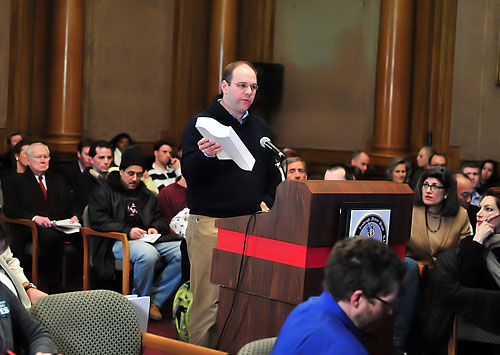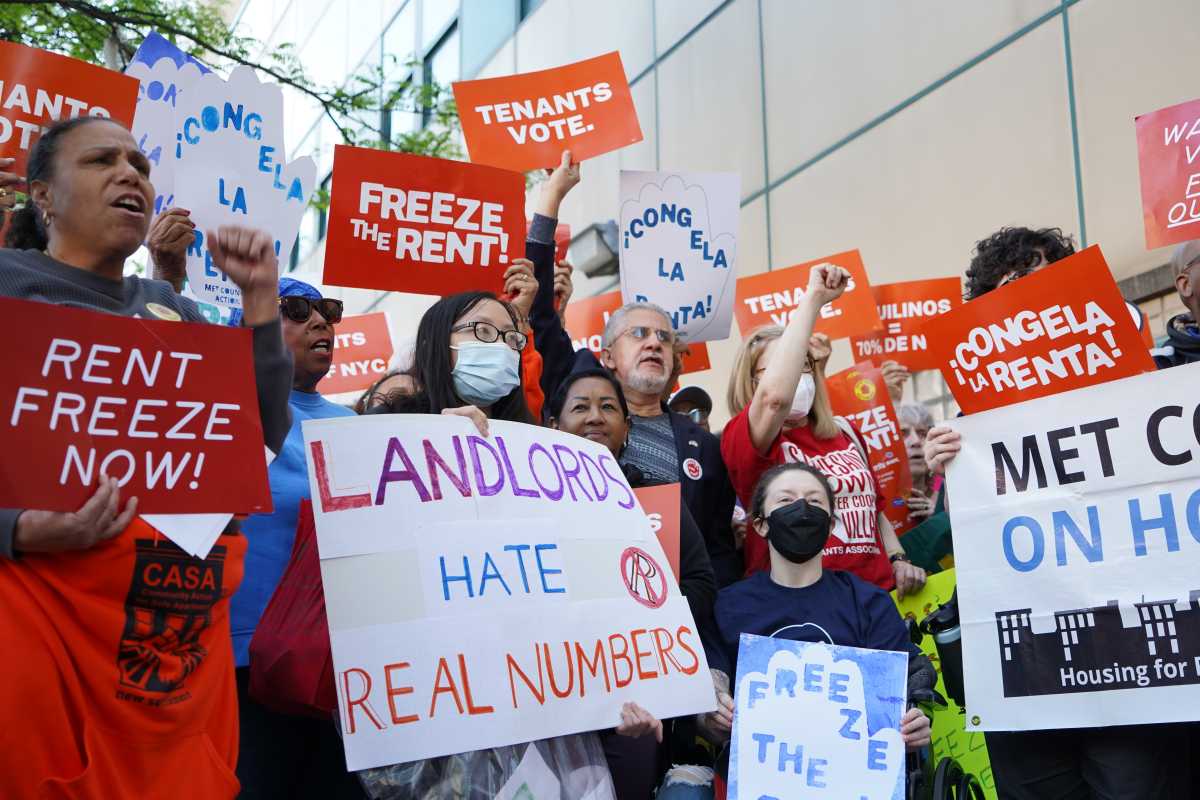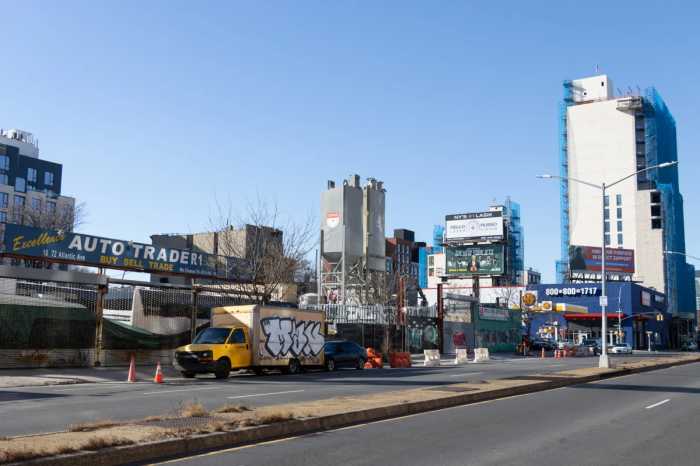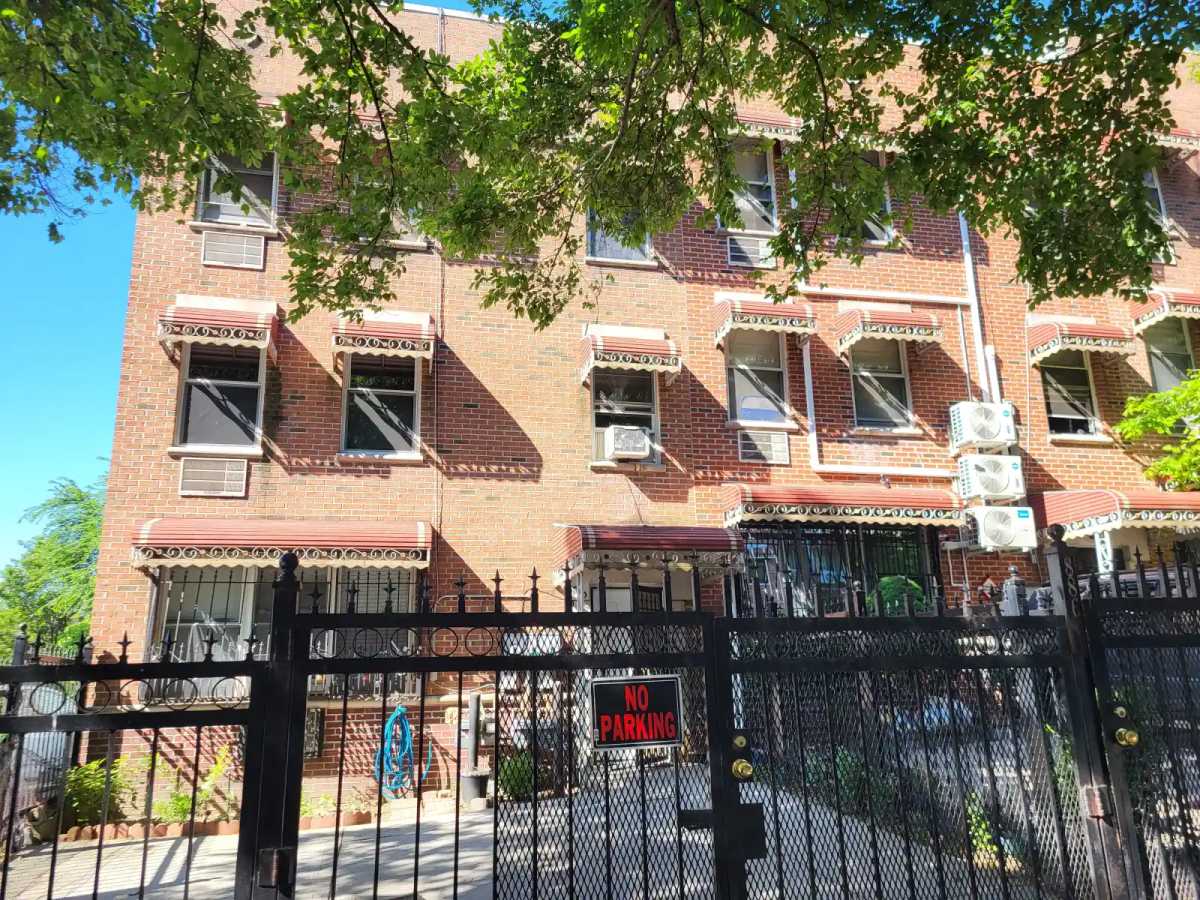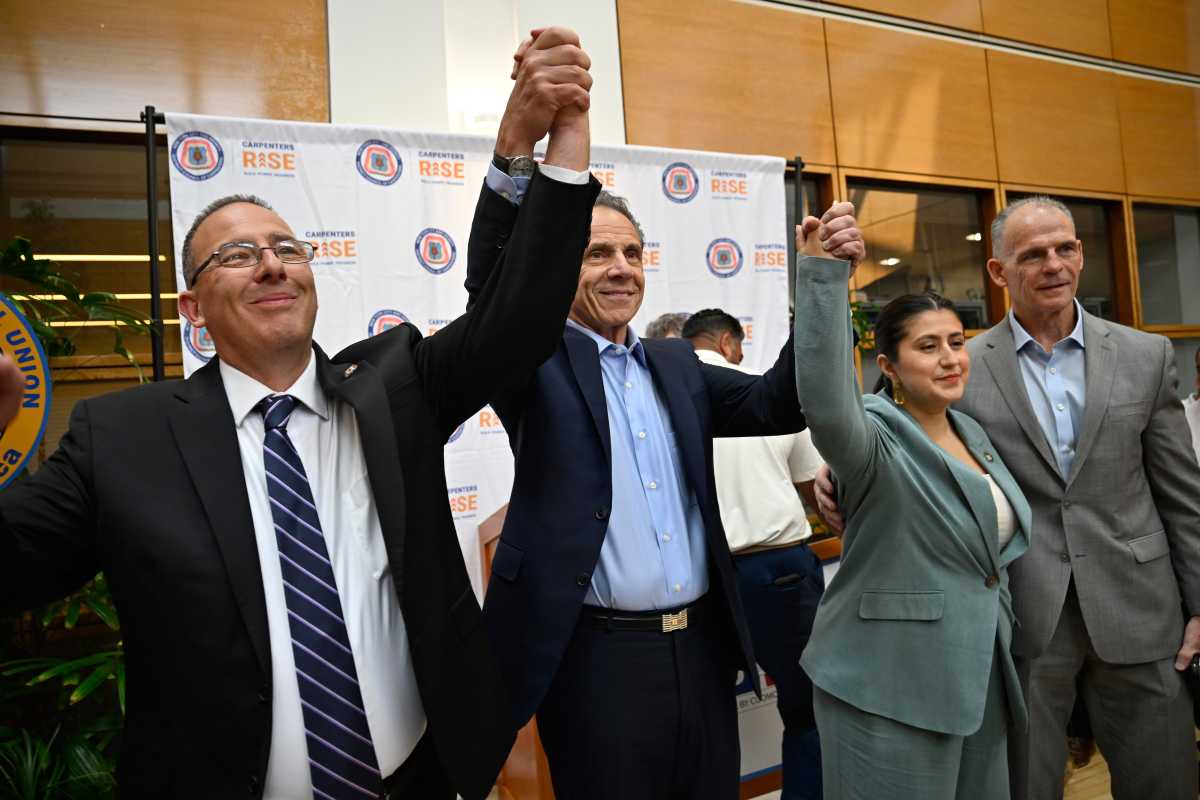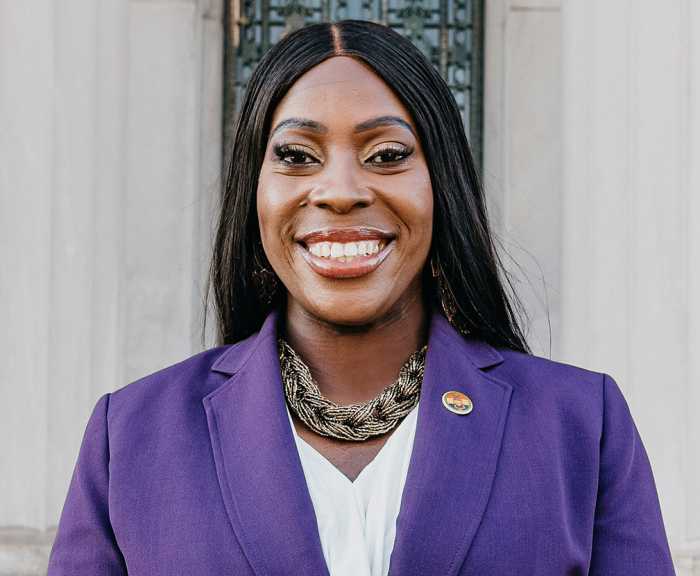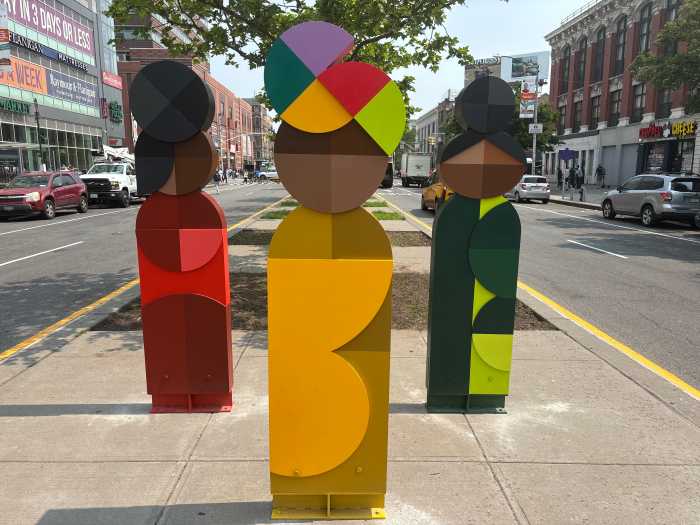Opponents of a controversial residential tower proposed to rise next to the Brooklyn Bridge brought their case to Borough President Markowitz on Tuesday night, bitterly describing developer Jed Walentas’s project as bad public policy and a disastrous way to treat the fabled and legendary span.
The majority of the roughly 100 speakers at Markowitz’s public hearing on the Dock Street proposal were opposed to Walentas’s plan to build an 18-story tower near the Brooklyn Bridge — a project that has added a public middle school, an environmentally friendly design, and approximately 70 units of below-market-rate housing since an earlier version was rejected in 2004.
“Nothing should ever be allowed to compromise the grandeur of the Brooklyn Bridge,” said Jeff Strabone, president of the Cobble Hill Association.
But many DUMBO residents, business people and artists rallied in support of the Walentas plan, which offers the hope of landing what the local community board has long listed as a top priority: a new public middle school to ease projected crowding.
The project needs a rezoning so that the site can include residential units and the school. In the first step of the public review process, Community Board 2 approved the project by a 30–7 vote earlier this month.
“This project serves the public interest of the broader Downtown community,” said Joe Chan, president of the Downtown Brooklyn Partnership, citing the new school and the first below-market-rate units in DUMBO, which is rapidly becoming Brooklyn’s most-expensive, and least-diverse, neighborhood.
Before the verbal fisticuffs, Markowitz reminded the crowd that he had rejected an earlier version because it put most of its bulk next to the bridge and was too damaging to the experience of the span.
Hinting at that prior rejection, Markowitz centered his opening statement on the view of the world-renowned icon.
“These views are very important to me, as I indicated by my objection to the earlier plan,” he said.
After that, he kept his famously expressive mouth shut and listened to all of the four hours of testimony that followed.
The first speaker, Councilman Bill DeBlasio (D–Park Slope), joined his Brooklyn Heights colleague David Yassky in objecting to the project. But DeBlasio stuck mostly to what he said was not enough below-market-rate units in the project, which currently sets aside 20 percent of its 375 apartments as “affordable housing.”
“The city needs to move towards greater affordability than 20 percent,” he said.
Other opponents painted Walentas, who has spent, by his own estimate, more than $100,000 to lobby city officials about the Dock Street plan over the past two years, as a man who sweetened his rejected project from 2004 with a public middle school — and then convinced city officials that this was the best offer they could get.
Indeed, as late as June, 2008, city officials were saying that they did not see a need for a middle school in DUMBO, despite demand by Brooklyn Heights-area parents for just such a school.
Then, about five months later, the city had quietly slipped the Dock Street school into its five-year construction plans.
“The School Construction Authority has not done due diligence,” said Roula Foukas, a DUMBO resident who is opposed to the project.
“How many potential sites are out there? We don’t know.”
But Jay Schipper, a real-estate developer, said he worked “for two years” to try to find a suitable site for a middle school in DUMBO, Brooklyn Heights or Downtown, but all possible locations were rejected by the School Construction Authority.
“There is not another site,” Schipper said. “And this building does not block views of the Brooklyn Bridge.”
Walentas’s inclusion of the middle school in his building would save the city an estimated $50 million in construction costs. But Yassky, whose middle school task force was so keen on finding another location for a school that it even briefly considered a city proposal to put a center of learning in the soon-to-reopen Brooklyn House of Detention, argued that the city could easily find another developer who would build a school for that price.
When pressed to name one, he mentioned the developer of the One Brooklyn Bridge Park condominium, and blamed the school agency for not putting such a school proposal out for bid.
Within hours, the developer withdrew his property from consideration.
But Yassky was unbowed.
“I am certain a developer would come forward,” Yassky told The Brooklyn Paper. “And if they don’t get a decent proposal, then, and only then, would I say that maybe this is the best project we can do.”
The owner of a vacant lot at 205 Water St., between Bridge and Jay streets on the other side of DUMBO, sent a representative to the hearing to say that he wants to make a deal with School Construction Authority. But the owner of the lot declined to elaborate.
Yassky also reiterated his belief that the building would damage “the experience” of the Brooklyn Bridge, though a recent Brooklyn Paper investigation revealed that views of the bridge and from the bridge would not be dramatically altered.
After the hearing, Walentas said everything went “as expected.”
“There is a strong constituency for and against,” he said.
Walentas said the city’s change of mind over the need for a middle school in DUMBO came as a result of his company showing school officials new data.
“If you’re an agency charged with building the maximum number of school seats for the least amount of money, you’d be reckless not to pursue a deal with us,” he said.
He also rejected the argument that the middle school was included solely to get approval for the rezoning, which will raise the value of his site and that of his company’s other properties in DUMBO, a former warehouse and industrial zone that his father, David Walentas, helped turn into one of New York’s most desirable neighborhoods for residents and artists.
“Yes, it is true that the rezoning would add value to the site,” he said. “But because of our broader interest in the neighborhood, we’re actually giving it back in the form of a school and affordable housing.
“There are people who don’t want to believe that, but I’m sorry, it’s true,” he said.



